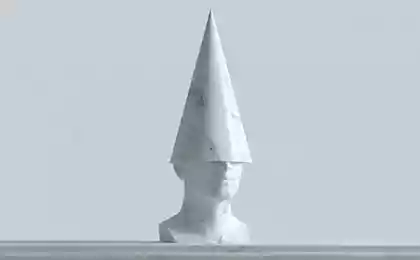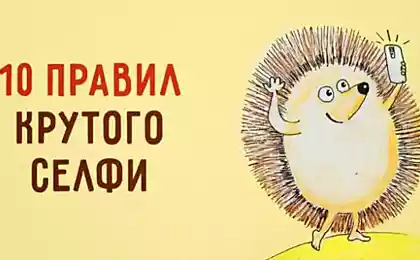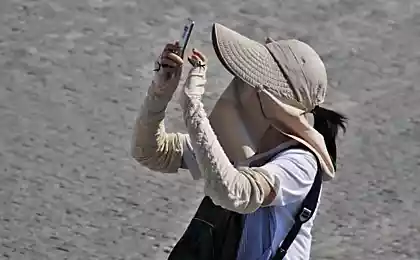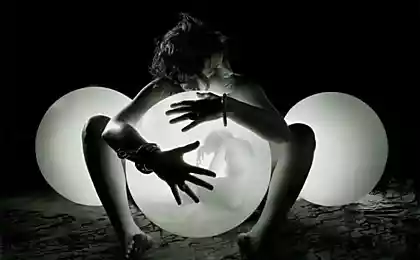479
Tetrad McLuhan— like cars, selfies and DIY bind us to the past
What is common among Amateur selfie with Rembrandt, as new items come in our field of vision text-align:justify">and why any innovation sooner or later becomes its opposite? How to find General patterns in how are born and disappear the products of human thought and labor explained the philosopher and media researcher Marshall McLuhan is one of the most cited scientists of the twentieth century. T&P publishing the four laws, which apply to any artificial object, created by man.
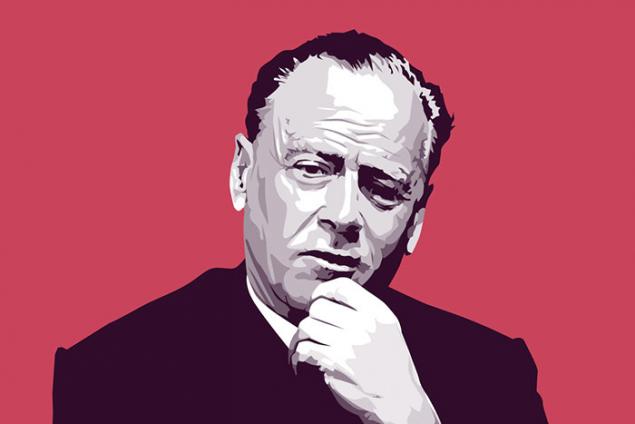
In the end, McLuhan decided to answer critics questioning the scientific validity of his work. In the book "Laws of Media: The New Science" he has formulated four laws that are valid for any media in his understanding — that is, for any artificial object created by man (McLuhan called these objects are artifacts).
According to the scientist, of the artifacts make up our environment, and from different cultures and communities, it looks different. The artificial environment is constantly transformirovalsya as each new object changes the relationships between the existing. The story of ray Bradbury "a sound of thunder" is about how the death of a butterfly effect on the future of the whole country is just about it. To describe how a new artifact affects the environment, McLuhan took the model of "figure-ground" of Gestalt theory.
When we look at the Gestalt of the figure, we can see one or the other image, whereas in reality there are both. What we perceive is "figure", the rest is "background". In a similar way, people use artifacts in our world coexists a huge number of items and ideas, but some are actively involved in important social processes and everyday practices, while others are not. The transfer of artifacts from the "shapes" in the "background" and Vice versa — is the basis of transformation of the built environment of man. Four key points of this transition and make "tetrad McLuhan".Pushes a new frame
Each new artifact empowers individuals — with his appearance we can implement a particular practice better, easier or faster than before. It makes use of the actual artifact ("figure") before the advent of more "advanced". For example, multi-pixel cameras in smartphones allow to take pictures of everything that crosses your path, more quickly than a classic digital camera.
The old retreats and adapt
Each new artifact leads to the fact that the practice of using artifact-predecessor for the same purpose becomes obsolete and leaves on the second plan, in terms of "shapes" in the "background". This does not mean that the new is sure to kill the old — it leads to the fact that the old ceases to be in the same order, but if he can find a new application, it will not die. For example, the proliferation of radio didn't kill press, as feared by some, but dismissed her from the position of informing, turning toward Analytics.
Not changing the essence of the practice, and the method of its implementation
Each new artifact returns practices from different eras that were previously associated with the use of other tools. This is a very important and interesting element of the tetrad. In fact, it turns out that all new — well forgotten old, but on a different stage of development. For example, SMS re-did "figure" the practice of sending short text messages, which people carried out with the help of telegrams. Selfie returns the practice of self-portrait, now for the masses. Because in the past the spread of mirrors led to the fact that the artists were able to massively write their portraits, after which they began to accuse of narcissism.
Innovation eventually becomes its opposite, Every new artifact sooner or later reaches the limit of its development and turns into its opposite — from the point of view of what human capabilities as it expands. He goes from "shapes" in the background, freeing up space to something new. A computer program, which initially was sharpened by the rapid execution of a single function (e.g., viewing images, recording to disk, audio), with the addition of new options have become slower to perform its original purpose. In their place came other programs and opportunities. But again, this does not mean that any artifact dies, having exhausted himself.
These laws are very simple, but they can be used to describe the development of any innovation (the classical examples listed in the books of McLuhan "Laws of media: the New science" and "the global village: transformation in world life and media in the XX century"). For example, the fashion for Smoking. This practice gives the smoker the confidence, soothes, helps not to feel embarrassed in a group of strangers. Thus, past Smoking returns the ritual, the feeling of safety within the group. But when you come to the extreme, the habit leads to the opposite effect of increasing anxiety and the development of dependence.Another example is Bank loans. Active use of this practice increases the level of inflation, and sooner or later from it begin to decline. Sole property becomes obsolete, and everything shifts towards rent. Thus, we return to the lifestyle of the ancient tribes disappear cash once again become a popular barter and DIY. And all those involved in the lending process, at risk of going bankrupt. McLuhan himself was investigated by this model various artifacts of Western society. For example, the car in the second half of the twentieth century was a "figure" of the middle class in the United States. He allowed the man to move from point a to point B with great speed, while being in a closed personal space. Previous vehicles have dramatically sidelined. Thus, according to McLuhan, the car returns from practices of the past "feeling of a quest, search". The motorist in the twentieth century are also free to spatial expansion, as a knight on horseback in the Middle ages. But reaching the limit of its development, universal motorization slows movement speed: there are traffic jams for hours. Then in society, a fashion for Hiking. It leads to the development of Cycling — trend expands due to the increase in bike speed compared to a pedestrian. But the bike gets from the "last car" the need for a more or less flat and separated from the pedestrian road.Modern realities are considered in detail through the prism of "tetrad McLuhan" in the book of Joseph Duggan "Zuckerberg Galaxy: a primer in media Malstrem", (named after malanowski "Gutenberg Galaxy") and Paul Levinson in"digital McLuhan for media: a guide to the information Millennium." On the Internet there are selection of comics, explaining the history of the development of the smartphone — also according to these laws. Rules of tetrad try to apply IT expected, in the management, education and other fields. While McLuhan proposed model is open to further development — as he wrote himself a scientist, the research in this area has only just begun
Source: theoryandpractice.ru

In the end, McLuhan decided to answer critics questioning the scientific validity of his work. In the book "Laws of Media: The New Science" he has formulated four laws that are valid for any media in his understanding — that is, for any artificial object created by man (McLuhan called these objects are artifacts).
According to the scientist, of the artifacts make up our environment, and from different cultures and communities, it looks different. The artificial environment is constantly transformirovalsya as each new object changes the relationships between the existing. The story of ray Bradbury "a sound of thunder" is about how the death of a butterfly effect on the future of the whole country is just about it. To describe how a new artifact affects the environment, McLuhan took the model of "figure-ground" of Gestalt theory.
When we look at the Gestalt of the figure, we can see one or the other image, whereas in reality there are both. What we perceive is "figure", the rest is "background". In a similar way, people use artifacts in our world coexists a huge number of items and ideas, but some are actively involved in important social processes and everyday practices, while others are not. The transfer of artifacts from the "shapes" in the "background" and Vice versa — is the basis of transformation of the built environment of man. Four key points of this transition and make "tetrad McLuhan".Pushes a new frame
Each new artifact empowers individuals — with his appearance we can implement a particular practice better, easier or faster than before. It makes use of the actual artifact ("figure") before the advent of more "advanced". For example, multi-pixel cameras in smartphones allow to take pictures of everything that crosses your path, more quickly than a classic digital camera.
The old retreats and adapt
Each new artifact leads to the fact that the practice of using artifact-predecessor for the same purpose becomes obsolete and leaves on the second plan, in terms of "shapes" in the "background". This does not mean that the new is sure to kill the old — it leads to the fact that the old ceases to be in the same order, but if he can find a new application, it will not die. For example, the proliferation of radio didn't kill press, as feared by some, but dismissed her from the position of informing, turning toward Analytics.
Not changing the essence of the practice, and the method of its implementation
Each new artifact returns practices from different eras that were previously associated with the use of other tools. This is a very important and interesting element of the tetrad. In fact, it turns out that all new — well forgotten old, but on a different stage of development. For example, SMS re-did "figure" the practice of sending short text messages, which people carried out with the help of telegrams. Selfie returns the practice of self-portrait, now for the masses. Because in the past the spread of mirrors led to the fact that the artists were able to massively write their portraits, after which they began to accuse of narcissism.
Innovation eventually becomes its opposite, Every new artifact sooner or later reaches the limit of its development and turns into its opposite — from the point of view of what human capabilities as it expands. He goes from "shapes" in the background, freeing up space to something new. A computer program, which initially was sharpened by the rapid execution of a single function (e.g., viewing images, recording to disk, audio), with the addition of new options have become slower to perform its original purpose. In their place came other programs and opportunities. But again, this does not mean that any artifact dies, having exhausted himself.
These laws are very simple, but they can be used to describe the development of any innovation (the classical examples listed in the books of McLuhan "Laws of media: the New science" and "the global village: transformation in world life and media in the XX century"). For example, the fashion for Smoking. This practice gives the smoker the confidence, soothes, helps not to feel embarrassed in a group of strangers. Thus, past Smoking returns the ritual, the feeling of safety within the group. But when you come to the extreme, the habit leads to the opposite effect of increasing anxiety and the development of dependence.Another example is Bank loans. Active use of this practice increases the level of inflation, and sooner or later from it begin to decline. Sole property becomes obsolete, and everything shifts towards rent. Thus, we return to the lifestyle of the ancient tribes disappear cash once again become a popular barter and DIY. And all those involved in the lending process, at risk of going bankrupt. McLuhan himself was investigated by this model various artifacts of Western society. For example, the car in the second half of the twentieth century was a "figure" of the middle class in the United States. He allowed the man to move from point a to point B with great speed, while being in a closed personal space. Previous vehicles have dramatically sidelined. Thus, according to McLuhan, the car returns from practices of the past "feeling of a quest, search". The motorist in the twentieth century are also free to spatial expansion, as a knight on horseback in the Middle ages. But reaching the limit of its development, universal motorization slows movement speed: there are traffic jams for hours. Then in society, a fashion for Hiking. It leads to the development of Cycling — trend expands due to the increase in bike speed compared to a pedestrian. But the bike gets from the "last car" the need for a more or less flat and separated from the pedestrian road.Modern realities are considered in detail through the prism of "tetrad McLuhan" in the book of Joseph Duggan "Zuckerberg Galaxy: a primer in media Malstrem", (named after malanowski "Gutenberg Galaxy") and Paul Levinson in"digital McLuhan for media: a guide to the information Millennium." On the Internet there are selection of comics, explaining the history of the development of the smartphone — also according to these laws. Rules of tetrad try to apply IT expected, in the management, education and other fields. While McLuhan proposed model is open to further development — as he wrote himself a scientist, the research in this area has only just begun
Source: theoryandpractice.ru








